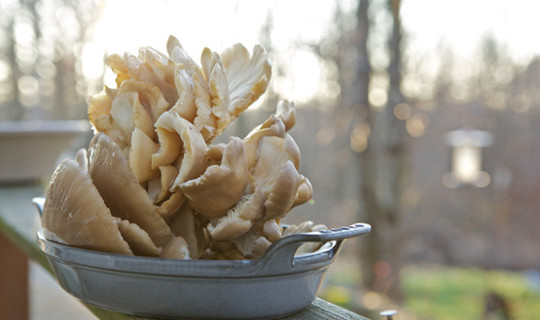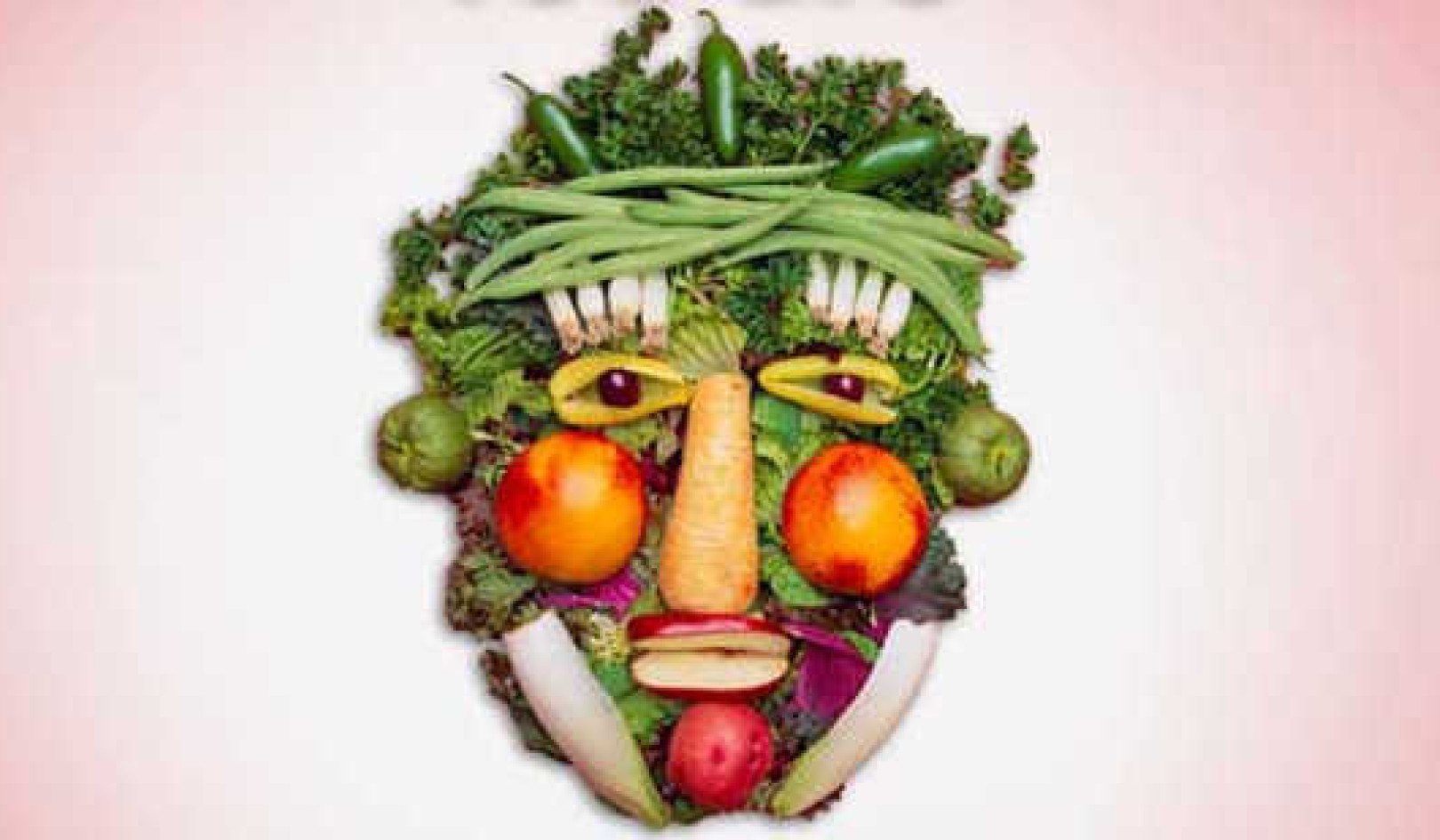 Photo by Chiot's Run / Flickr.
Photo by Chiot's Run / Flickr.
 ou don't need a garden to grow mushrooms—any cool, shady space will do, even a cupboard or dark corner.
ou don't need a garden to grow mushrooms—any cool, shady space will do, even a cupboard or dark corner.
It’s fairly easy to grow oyster mushrooms indoors in a bag or a 2-gallon bucket using sawdust or spent coffee grounds as the growing medium. Mushrooms appreciate the nitrogen in coffee grounds, and the coffee-making hot water treatment clears grounds of mold or microorganisms that might compete with your fungi as they get their mycelium running.
Some Japanese researchers are treating cancer patients with a compound derived from mushrooms.
Collect used coffee grounds from a cafe or save your own at home. Keep them in the freezer until you have enough to get growing, or pasteurize your growing medium in the microwave. Depending on the variety, it may only take two weeks or so to get your first crop of mushrooms.
Begin With Your Butts
Novice mushroom farmers stand the best chance of success by starting with a modest mushroom-growing kit, consisting of “spawn” of an easy-to-grow variety and a container of growing medium. But some mushroom varieties, notably oysters, can be established from the mycelium trailing from stem ends, or “butts.”
Look for mycelium on freshly-picked mushrooms from the wild or from your farmers market.
Packed With Nutrients
Mushrooms are a good source of protein, energy-releasing B vitamins, and selenium, a mineral that supports the immune system and fertility. They’re especially helpful for vegetarians and vegans, whose sources of selenium are limited.
Counterintuitively, the shade-loving mushroom is the only produce source of vitamin D, “the sunshine vitamin.”
Dry Them For Umami
Alternatively described as earthy, meaty, smoky, or savory, umami is the taste that brings flavors together and gives a dish substance. Dried mushrooms are an excellent pantry staple for instant, intensified umami. Cut clean mushrooms into thin slices or dry delicate mushrooms whole. Place the mushrooms on a baking sheet—without oil. Dry them slowly in the oven at about 180 degrees, turning them over once, until they are brittle and completely dry on both sides.
Some cooks swear by the transformative magic of mushroom powder. Pulverize dried porcini or shiitake in a spice grinder or blender. Mix in herbs, chili flakes, salt, and pepper to taste. Sprinkle on eggs, greens, risotto, pasta—even popcorn.
Mushrooms As Medicine
Mushrooms are a good source of protein, energy-releasing B vitamins, and selenium.
Some varieties of mushrooms amp up their production of vitamin D when exposed to sunlight. Mushrooms high in vitamin D are already being sold in supermarkets, and they could be a future non-animal source of vitamin D supplements.
Western medicine is catching up on an ancient aspect of Asian medicine—the medicinal properties of mushrooms. Recent research has shown shiitake mushrooms may help control the inflammation associated with conditions like arthritis and cancers. Some Japanese researchers are already treating cancer patients with lentinan, a compound derived from mushrooms.
This article appears in Cities Are Now,
the Winter 2015 issue of YES! Magazine.
InnerSelf Recommended Book:
The Permaculture Handbook: Garden Farming for Town and Country
by Peter Bane.
 Permaculture is about working with the earth and with each other to repair the damage of industrial overreach and to enrich the living world that sustains us. The Permaculture Handbook is the definitive practical North American guide to this revolutionary practice, and is a must-read for anyone concerned about creating food security, resilience, and a legacy of abundance rather than depletion. This comprehensive manual casts garden farming as both an economic opportunity and a strategy for living well with less money.
Permaculture is about working with the earth and with each other to repair the damage of industrial overreach and to enrich the living world that sustains us. The Permaculture Handbook is the definitive practical North American guide to this revolutionary practice, and is a must-read for anyone concerned about creating food security, resilience, and a legacy of abundance rather than depletion. This comprehensive manual casts garden farming as both an economic opportunity and a strategy for living well with less money.























